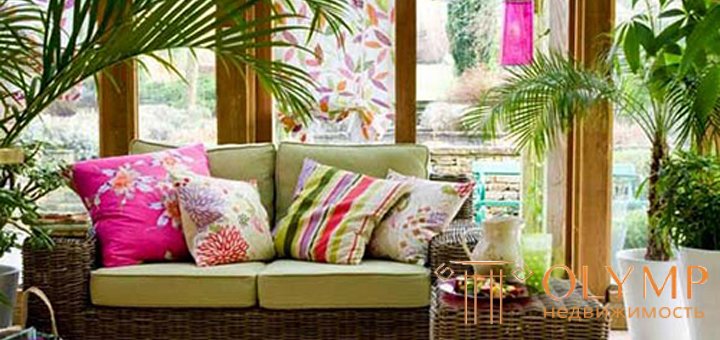

It is difficult to imagine a modern interior without indoor plants. They are the most affordable decoration at home. Leaves and flowers of various shapes and colors give it a fresh and special charm. With their help, you can refine even the most dreary and modest room. But before embarking on the transformation of their homes in the heavens will not prevent to get acquainted with some simple rules.
1. To make the room look more stylish, pick flowers, the color of which echoes the tone of wallpaper, curtains, furniture upholstery.
2. On a light background, the plants look especially beautiful. Large-leaved plants are suitable for wallpaper with a small pattern. And against the background of bright and catchy wallpapers, ferns with filigree leaves look better.
3. A large plant looks better in a spacious room, especially if it stands apart from the rest. Such a single plant located is called a solitary plant. It decorates an empty corner or can divide the space into separate zones.
4. Small plants are better placed in group compositions. So they look more impressive than one by one. But at the same time they can cover each other’s shortcomings: a bare trunk or damaged leaves, a not very pretty pot. It is more convenient to care for such a group if you pick plants with a similar irrigation regime, requirements for light and humidity.
5. Forming a composition of flowers, a small flowering plant is placed in the foreground, and a tall one or on a stand is placed behind it. And the hanging whip of an ampelous plant will add to the composition grace and completeness.
6. Volumetric sprawling plants with open leaves (palm trees, for example) will visually enlarge the room.
7. The tall tall plants standing on the floor will visually “lift” the ceiling. And low sprawling plants or hanging pots with ampelous forms will make the room lower.
8. To divide the room into separate zones, you can build a “wall” from a group of plants of different height and shape. For this purpose, abutilon, hibiscus, high aspidistra, dieffenbachia, dracaena, Californian cypress, monstera, philodendron, rubber plants, hamedorea are most often used.
As a rule, the most beautiful plants are placed in the living room. But if it is small, then you do not need to overload it with flowers. You can arrange plants with islands, and closer to the window on a stand place the florarium. For this purpose, glass containers of various shapes are used. Water-loving plants are planted in them, adding pebbles, moss, and fancy snags to the composition. You should not overload with flowers and a bedroom, one or two plants with light green foliage will be enough. On the bedside table will look especially good pot with flowers, wrapped in cloth to match curtains or bedspreads.
Moisture-loving plants with glossy leaves that are resistant to evaporation and often washed because of them are selected for the kitchen. They feel well in the kitchen bulbous, custard, anthurium, zigokaktus, bells, balsam, pelargonium.
When purchasing houseplants, remember that they do not just decorate our homes. In the US, studies have been conducted that showed that some indoor plants significantly improve water-gas exchange in rooms. These plants include the sanceviera (or the pike tail), chlorophytum, ivy, philodendron, dieffenbachia, monstera, arrowroot, anthurium. These plants not only emit a large amount of oxygen into the air, but are also capable of absorbing harmful substances from the air. And cryptomeria, codiaeum, cereus and juniper saturate the air in the room with negative oxygen ions, which have a positive effect on human health.
Что бы оставить комментарий войдите
Комментарии (0)